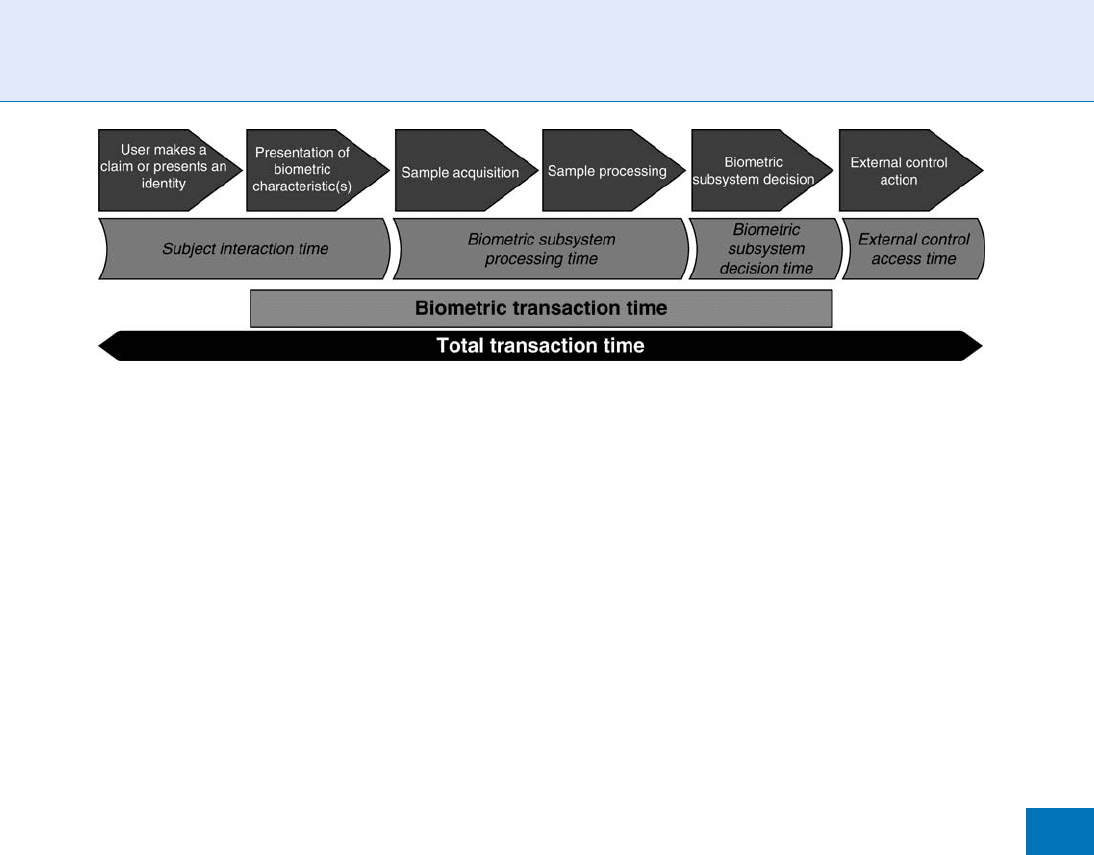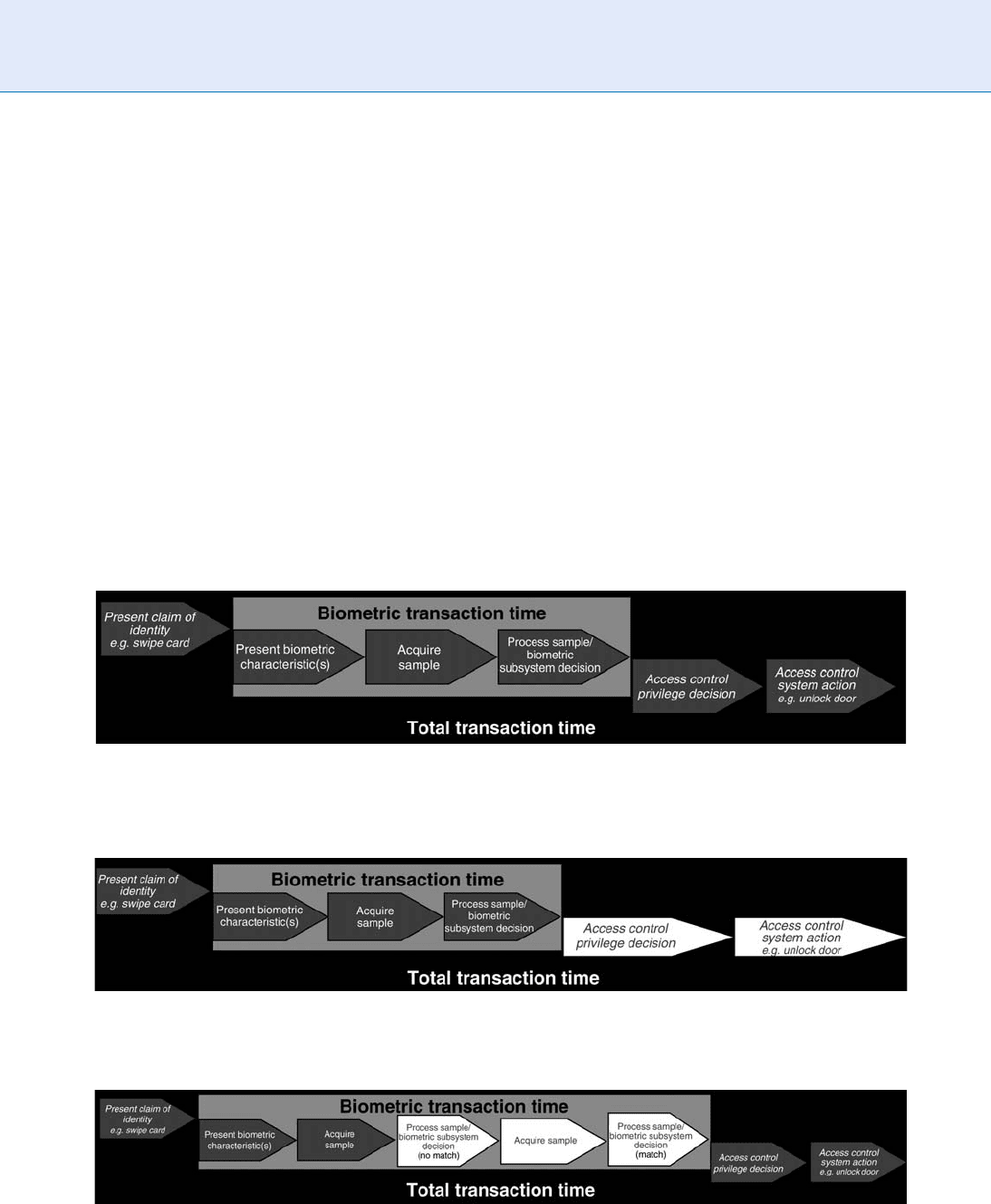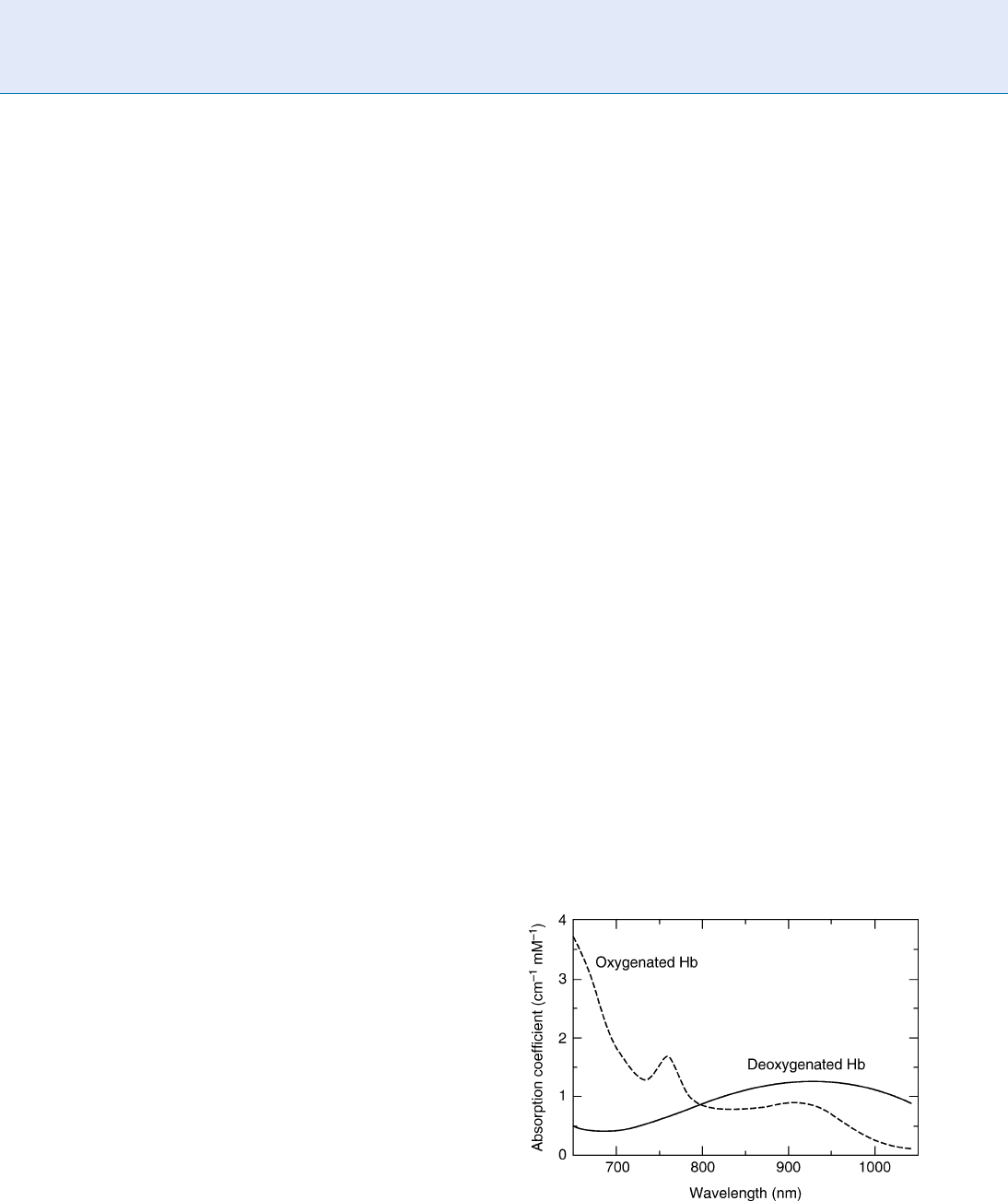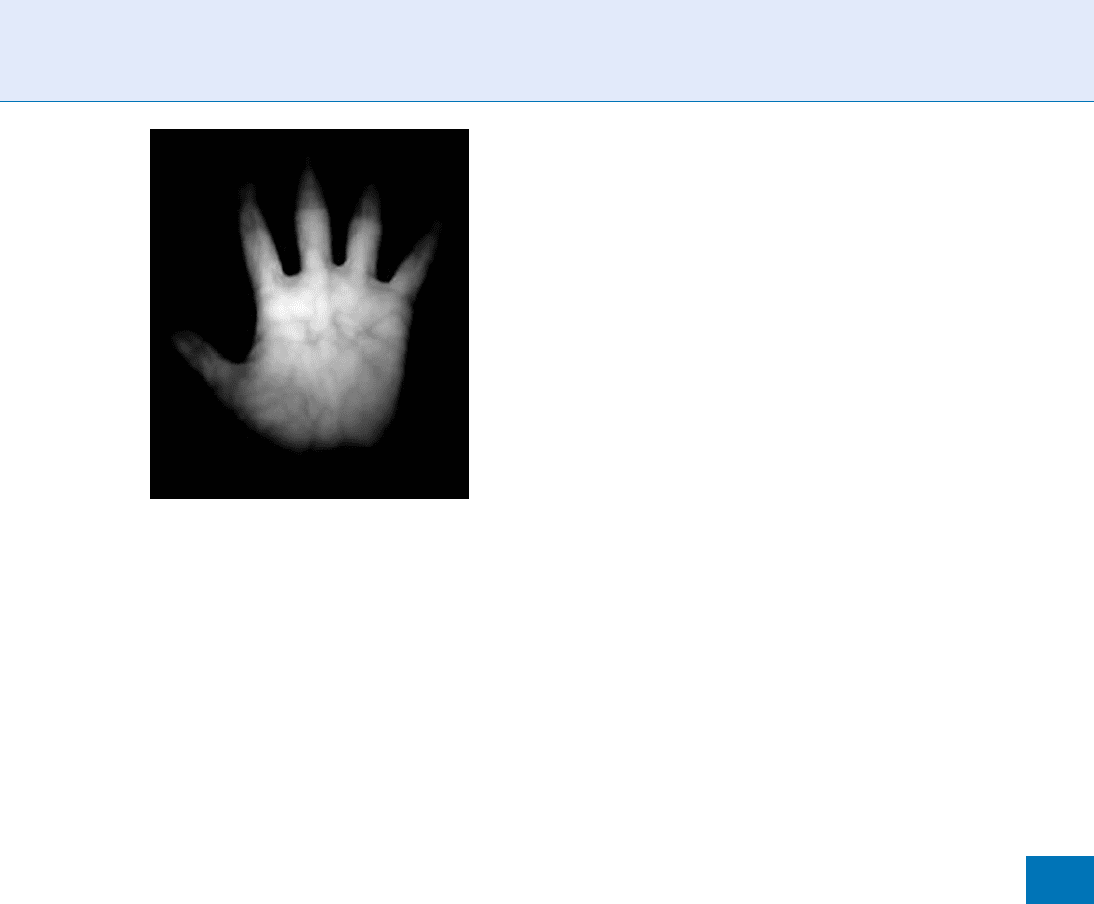Li S.Z., Jain A.K. (eds.) Encyclopedia of Biometrics
Подождите немного. Документ загружается.


Standardization
In order to allow for better global interoperability,
several efforts to standardize the biometric match-on-
card technology are on-going. There is effort at the
international standards body ISO/IEC JTC1 SC17
WG11 to introduce the match-on-card standards. In
addition, the effort on biometrics is also on-going, such
as at the ISO/IEC JTC1 SC37 level to develop the com-
pact fingerprint template format suitable for smartcards.
In 2005, several standards for biometric data inter-
change format have been published including finger
minutiae data, finger pattern spectral data, finger image
data, face image data, iris image data, finger patter n
skeletal data etc. ISO/IEC 19794-1 [10 ] is intended to
describe the framework for defining biometric data
interchange formats. In ISO/IEC 19794-2 finger min-
utiae data [11], compact card format is included in the
specification to support fingerprint authentication
with smartcard. The document ISO/IEC 7816-11
[12], published in 2004, specifies basic operations for
performing personal verification through biometric
methods using smartcard. However, the above stan-
dards are not sufficient for biometric match-on-card.
A standard with more in-depth specification is
needed for deployment of match-on-card with better
interoperability.
In 2006, a new work group (WG) 11 in Sub-
Committee 17 under Joint Technical Committee 1
(JTC1) of ISO/IEC was formed. The role of WG11 is to
define the functional blocks and components for the use
of integrated circuit (IC) cards in applications where
the matching of biometric identifiers is to be performed
on-card. The document entitled ‘‘24787 Information
technology - Identification cards: On-Card matching’’
is still under committee draft stage as of February 2008.
Technical Challenges
MOC technology is challenging to develop due to the
limited resources – computational power, memory,
and power supply, in the smartcards. For example,
today’s PC has powerful specification while for smart-
card has relatively much lower processing capability.
For example, one of the high-end configurations is
only 16-bit, 25 MHz processor with 8Kb RAM and
1Mb flash memory. There are few 32-bit smartcards
but the price are quite expensive. The most widely used
smartcard is the 8-bit card due to its low cost. More-
over, applications in the smartcard have to share
resources especially the limi ted stat ic memory for
runtime execution. For a contactless smartcard, avail-
ability of RF power is crucial. If the peak power
demanded by the intensive computation is not met or
that the computational duration is longer than what
the power can be sustained from the reader through
induction, then the match ing process will fail. As a
consequence, the user will experience a ‘‘false rejec-
tion’’ even though the rejection is not due to the
outcome of the biometric matching. Moreover, soft-
ware optimization is very crucial for MOC implemen-
tation to achieve good matching performance. The
optimization in term of speed, resource allocation
and code size are necessary during the system design
phase. Nevertheless, fingerprint match-on-card can al-
ready be realized today on an off-the-shelf Java card
having 8-bit, 5 MHz CPU core, 5k bytes RAM and
32Kb EEPROM or better w ith Java OS. The following
optimization methods are commonly employed in
development of match-on-card technology:
1. Reduce the size of the template: Reduce the amount
of information to be matched during on- card
matching can reduce the overall matching time.
For example, fingerprint match-on-card can restrict
the maximum number of minutiae to less than
60 minutiae to be matched per template. However,
information reduction may degrade the accuracy of
the matcher. Developer should be aware of how
much information should be reduced to achieve
acceptable accuracy.
2. Work-sharing biometric match-on-card: Some
low-end smartcards are not able to handle the
whole biometric matching algorithm within
acceptable timing. In this case, work-sharing archi-
tecture which has been introduced previously can
be used to speed up the matching process. The idea
of work-sharing architecture is to assist the smart-
card to compute those computation intensive
functions of the matching algorithm, such as
template alignment, using the biometric terminal.
The final biometric comparison, such as the calcu-
lation of matching score, shall be computed inside
the smartcard. The smartcard can send intermedi-
ate data or information other than enrolment
template to the terminal using secure channel.
The developer should be aware of the security
1020
O
On-Card Matching

requirement to design matching algorithm using
work-sharing architecture for smartcard.
3. Biometric codeword or hashing: Some researchers
investigate algorithms to generate codeword such
as finger code [13] or biohashing [14 ]. In this case,
the complexity of the matching algorithm in the
smartcard can be reduced. However, the stability of
the biometric codeword is still not as robust as
fingerprint matching due to alignment and defor-
mation of the biometric presentation. Hence,
developer should be aware of whether the accuracy
is sufficient for particular application.
Summary
Biometric match-on-card technolo gy holds great
promise in offeri ng good security and privacy protec-
tion. The technology has come a long way to become
feasible today at an attractive cost and more can still
be done to make it better and cheaper. It provides a
good platform for the launch of a nation wide strong
identity authentication capability which will open up
many other new applications and business possibilities
that will provide better convenience, security and pro-
tection to the users as compared to what is being used
today. The re is also a foothold of this technology in the
global push for machine readable travel documents
which hopefully will lead to a global opportunity in
biometric system level application.
Related Entries
▶ Authentication
▶ Enrolment
▶ Identification
▶ Match-on-Card
▶ Verification
References
1. Hines, M.: LexisNexis break-in spurs more calls for reform.
ZDNet.com, http://news.zdnet.com/2100-1009-5606911.html
(2005)
2. Vijayan, J.: Scope of credit card security breach expands.
Computerworld, http://www.computerworld.com/securitytopics/
security/ stor y/0,10801,101101,00.html (2005)
3. Scheuermann, D.: Identification cards - Integrated circuit cards
with contacts - Part 11: Personal verification through biometric
methods, ISO/IEC 7816-11:2004. International Organization for
Standardization/International Electrotechnical Commission
(2006)
4. Allah, M.M.A.: A fast and memory efficient approach for finger-
print authentication system. IEEE Conf. Adv. Video Signal Based
Surveill. pp. 259–263 (2005)
5. Krivec, V., Birchhauer, J., Marius, W., Bischof, H.: A hybrid
fingerprint matcher in memory constrained environments
2(18-20), 617–620 (2003)
6. Rikin, A.S., Li, D., Isshiki, T., Kunieda, H.: A Fingerprint Match-
ing Using Minutia Ridge Shape for Low Cost Match-on-Card
Systems. IEICE Trans. E88-A(5), 1305–1312 (2005)
7. Mimura, M., Ishida, S., Seto, Y.: Fingerprint verification system
on smartcard. In: International Conference on Consumer Elec-
tronics pp. 182–183 (2002)
8. Bistarelli, S., Santini, F., Vaccarelli, A.: An Asymmetric Finger-
print Matching Algorithm for Java Card
TM.
Pattern Anal.
Appl. J. 9(4), 359–376 (2006)
9. Grother, P.W.S., Watson, C., Indovina, M., Flanagan, P. (eds.):
Performance of Fingerprint Match-on-Card Algorithms
Phase II Report. National Institute of Standards and
Technology (2008)
10. Stardards: Information technology - Biometric data interchange
formats - Part 1: Framework, ISO/IEC 19794-1:2006. Interna-
tional Organization for Standardization/International Electro-
technical Commission (2006)
11. Stardards: Information technology - Biometric data interchange
formats - Part 2: Finger minutiae data, ISO/IEC 19794-2:2006.
International Organization for Standardization/International
Electrotechnical Commission (2006)
12. Stardards: Usability of Biometrics in Relation to Electronic Sig-
natures, ISO/IEC JTC1/SC17 N1793. International Organization
for Standardization/International Electrotechnical Commission
(2000)
13. Jain, A.K., Prabhakar, S., Hong, L., Pankanti, S.: Filterbank-
based Fingerprint Matching, IEEE Transactions on Image Pro-
cessing. IEEE Trans.Image Process. 9(5), 846–859 (2000)
14. Teoh, B.J.A., Ngo, C.L.D., Goh, A.: BioHashing: two factor
authentication featuring fingerprint data and tokenised random
number. Pattern Recognit. 37, 2245–2255 (2004)
One-to-Many Identification
One-to-many matching is a process of searching a
dataset to match the target image with those of more
than one persons to identify an individual. See also
▶ Identification.
If a biometric sample is compared with n templates,
where n is a positive integer, the matching process is
One-to-Many Identification
O
1021
O

referred to as a 1:n matching. In the case of n =1,itis
equivalent to a verification process. If n > 1, it is
regarded as an identification process and sometimes
expressly described as 1:many matching.
▶ Biometrics, Overv iew
One-to-One Verification
One-to-many matching is a process of matching the
target image against those of the claimed person to
verify an individual. See also
▶ Verification .
▶ Biometrics, Overv iew
Online Learning
▶ Incremental Learning
Open-Set Identification
It is unknown whether the subject presented to the
biometric system for recognition has enrolled in the
system or not. Therefore, the system needs to decide
whether to reject or recognize him as one of the
enrolled subject. It is the opposite of ‘‘Closed-Set
Identification.’’
▶ Performance Evaluation, Overview
Operational Tests
Operational tests are those in which a biometric system
collects and processes data from actual system users in
a real field application. Operational tests differ funda-
mentally from technology and scenario tests in that the
experimenter has limited control over data collection
and processing. Because operational tests should not
interfere with or alter the operational usage being eval-
uated, it may be difficult to establish ground truth at the
subject or sample level. As a result, operational tests may
or may not be able to evaluate match or enrollment
rates, FRR, or FTE; instead they may be able to directly
measure acceptance rates (without distinction between
genuine and impostor) and operational throughput.
▶ Performance Testing Methodology Standardization
Operational Times
STEPHEN J. ELLIOTT
1
,ERIC P. K UKULA
1
,
R
ICHARD T. LAZARICK
2
1
Department of Industrial Technology, Purdue
University, West Lafayette, IN, USA
2
Chief Scientist-GSS Identity Labs Computer Science
Corporation Camp Hill, PA
Synonyms
Biometric decision time, and the external operation
time; Biometric subsystem transaction time; Biometric
transaction time; External operation time; Subject in-
teraction time; Total transaction time
Definition
There are a number of associated definitions for ‘‘time’’
as they relate to an operational biometric system(s).
These ‘‘time’’ metrics include the total transaction
time, the overt biometric transaction time, the subject
interaction time, the biometric subsystem processing/
transaction time, the biometric decision time, and the
external operation time.
Introduction
One definition of time is given as ‘‘the length of time
taken to complete an activity’’ [1]. For a biometric
system, ‘‘time’’ can be segmented in alignment with a
particular activity or function. Assuming that the bio-
metric model in Fig. 1 is for an access control system,
1022
O
One-to-One Verification

and that the steps of that model are shown, there are
five different types of event time. These include the
subject interaction time, the biometric subsystem pro-
cessing time, the biometric decision time, the biomet-
ric transaction time, and the total transaction time.
This document outlines the various timing metrics
that are used in biometric verification applications.
They include the overall transaction time, the subject
interaction time, the biometric subsystem processing
time, and the biometric decision time. Although the
document includes examples from a technical contribu-
tion presented to Working Group 5 in the international
biometric standards committee (ISO/IEC JTC 1 SC37)
on the developments of timing metrics in scenario test-
ing for biometric access control systems, the metrics can
be applied to generic biometric verification systems.
Total Transaction Time
The total transaction time is a sum of all the subcom-
ponent periods of time associated with the biometric
application system. For a biometric verification sys-
tem, the overall transaction time is initiated when the
user makes a claim or presents an identity (i.e., swipes
a card or enters a PIN). The overall transaction time is
completed when the last measurable component has
been satisfied, in the physical access control system
when the door strike is activated.
Biometric Transaction Time
This begins with the biometric sample presentation
and ends with the biometric decision. Therefore, this
includes the presentation of the biometric trait portion
of the subject interaction time, biometric subsystem
processing time, which includes sample acquisition
and sample processing time, and the biometric deci-
sion time.
Subject Interaction Time
Using the same access control system as described
earlier, the subject interaction time commences when
a claim of identity is made (or presented), that is,
swiping a card or entering a PIN by the user. The
time ends when the in dividual has presented hi s/her
biometric characteristic(s) and the sensor begins to
acquire the sample.
Biometric Subsystem Processing Time
The biometric subsystem processing time is the time
taken for the system to acquire the biometric sample, to
evaluate the quality of the sample, and if the quality is
satisfied, to process that sample for comparison. For the
samples of bad quality, the biometric system requests
the subject to submit the biometric trait. The biometric
subsystem processing time ends when either a compari-
son score or a request for re-submission is generated.
Biometric Decision Time
The biometric decision time is the time required by the
biometric subsystem to generate an accept or reject
response based on the comparison score and the deci-
sion logic. The decision logic could be a simple thresh-
old or a more complex methodology such as fusion
logic. In biometric identification where the biometric
subsystem generates a list of matched candidates, the
biometric decision time is the time required to search
Operational Times. Figure 1 Types of transaction times.
Operational Times
O
1023
O

the subject from the database of enrolled subjects. In
this case, it depends on both t he size of the database
and the strategy in search, for example, the classifica-
tion or binning of biometric samples.
External Operation Time
Pro vided that the biometric decision is an accept,
the external operation time is the time required to
complete the application transaction. In the physical
access control system, it is the time required by the phy-
sical electro-mechanical components to act according
to the decision of the biometric subsystem and other
access control privilege criteria to complete the access
transaction. In biometric identification, the external op-
eration time is not required because the external opera-
tion is typically a manual function.
Timing Illustrations
According to a Technical Contribution from the ISO/
IEC JTC 1 SC 37 WG5 Special Group on 19795–5 [2],
timing can be related to the type of testing to be
undertaken. There are three major types of testing:
technolog y, scenario, and operational.
For the purpose of evaluating the performance
of a biometric subsystem in a scenario evaluation, it
is appropriate to define a metric that only measures the
biometric subsystem performance and is not influ-
enced by the presence or performance of other access
control devices, policies, and functions. Thus, the dis-
tinction is made between biometric transaction time
and total transaction time. This distinction is made in
timing diagrams illustrating the components of a bio-
metric transaction and a total access control system
transaction shown in Figs. 2–4.
Operational Times. Figure 2 Timeline showing total and biometric subsystem transaction times for a one-attempt
transaction.
Operational Times. Figure 3 Timeline showing total and biometric subsystem transaction times for a one-attempt
transaction with longer access control time.
Operational Times. Figure 4 Timeline showing total and biometric subsystem transaction times for a two-attempt
transaction.
1024
O
Operational Times

Related Entries
▶ Attempt
▶ Failure to Acquire (FTA)
▶ Failure to Enroll (FTE)
▶ General Biometric Model
▶ Match rates
▶ Performance Testing and Evaluation – Technology,
Scenario, and Operational Testing
▶ Presentation
▶ Threshold
▶ Transaction
References
1. Soanes, C., Hawker S.: Compact Oxford English Dictionary of
Current English (3rd ed.). Oxford University Press, New York
(2005)
2. International Organization for Standardization.: ISO/IEC JTC1
SC37 Comments from the Special Group Established to Review
19795–5 (N-1770) (No. SC37N1853). Geneva: ISO/IEC (2006)
Optical Flow
Optical flow is a vector field that represents the motion
of pixels between two images. A variety of algorithms
have been developed for computing optical flow. It is
commonly computed for video, in which the motion
from one frame to the next is relatively small.
▶ Face Variation
▶ Gait Recognition, Silhouette-Based
Optical Target
Optical target refers to an object the optical character-
istics of which are well known. It is used to perform an
optical calibration of lenses or illuminators.
▶ Biometric Sensor and Device, Overview
Optimal Hyperplane
▶ Support Vector Machine
Optimization
Given a cost function, different strategies could be used
to obtain the estimate. This is called the optimization
strategy and the solution often depends upon the exact
strategy that is used.
▶ Face Tracking
Ordinal Measure
In ordinal measure, variables are required to be mono-
tonically related so that they can be rank-ordered. In
palmprint identification, ordinal measure qualitatively
compares neighborhood image pixels or regions and
preserves their ordinal relationship. This yields a sym-
bolic representation of the relations.
▶ Palmprint Features
Orthographic Scanning
The procedure of recording two-dimensional images
of an object with the goal of capturing the object’s
three-dimensional structure. In a hand-geometry de-
vice, for example, it is performed with the help of a
mirror that projects the lateral surface of the hand into
the visual field of the camera and allows it to record
both the side and top views of the hand in a single
image.
▶ Hand-Geometry Device
Orthographic Scanning
O
1025
O

Osmology
Osmology is the study of odors and the sense of smell;
phrase coined by the Polish Forensic Police for the field
of science where trained dogs compare scent traces that
the perpetrator of a crime leaves at the crime scene
to the odor of a person suspected of that crime in
a line-up procedure.
▶ Odor Biometrics
Output Noise Variance (ONV)
The output noise variance is the variance of the noise
of a correlation plane. If the input noise is stationary
and w ith Gaussian distribution, the output noise
on correlation plane is also going to be stationary
and Gaussian distributed. The output noise variance
describes the output noise variance at all pixels in the
output. If we would like to see a noise-tolerant peak on
the correlation plane for the authentic comparison, it
is desirable to make the noise variance on the correla-
tion plane as small as possible on average. That is why
would like to incorporate the criteria for minimizing
ONV in the design of the correlation filters.
▶ Iris Recognition Using Correlation Filters
Outsole Pattern Matching
▶ Footwear Recognition
Overfitting
The phenomenon that the learning result performs
very good on training data but poorly on unseen new
data, which is caused by that the learning approach has
fit the training data too much, such that some malign
particularities that prevent good generalization has
also been captured by the learning result.
▶ Ensemble Learning
▶ Mainfold Learning
1026
O
Osmology

P
Paleoanthropology
Paleoanthropology is the study of ancient human
beings, with the evidences such as bones, and
footprints.
▶ Skull, Forensic Evidence of
Palm Dorsal Vein
▶ Hand Veins
Palm Segment
It refers to one of the three palm portions: lower palm,
upper palm, and writer palm.
▶ Fingerprint, Palmprint, Handprint and Soleprint
Sensor
Palm Vein
MASAKI WATANABE
Fujitsu Laboratories Ltd, Kawasaki, Japan
Synonyms
Palm vein authentication; Palm vein recognition
Definition
Palm vein authentication is one of a modality of
biometric authentications, and is classified as a phy-
siological biome tric authentication. It uses palm vein
patterns, a vascular image of a person’s palm which can
be seen as a kind of pattern, as personal information.
The palm vein patterns are normally captured
under near-infrared illumination using the reflection
method, in which
▶ near infrared rays are emitted
from a person’s palm and the reflected light is cap-
tured. The places on the palm where veins occur are
captured as dark parts because veins absorb more near-
infrared illumination while emitting only little. With
this reflection method, a
▶ contactless type of pattern-
capturing and user identification can be realized.
Because veins are inside the human body, they are
secure and hard to be stolen or duplicated. Moreover,
because palm vein patterns are varied and complex,
they have sufficient information to identify one indi-
vidual among many people and palm vein authentica-
tion is highly accurate.
A contactless type of identification is suitable for
applications that require a high level of hygiene and
for public-use applications. Several banks in Japan
use palm vein authentication to identify customers
since July 2004. In addition, the method has been
used in a variety of applications including door secu-
rity systems of offices and condominiums, login man-
agement systems for PCs, and to identify patients
in hospitals.
Introduction
Palm vein authentication is one of the vascular pattern
authentication technologies. It uses palm vein patterns,
which are difficult to be seen by human on a person’s
palm, as personal information. Because palm vein pat-
terns are information that are found within someone’s
body, it is hard for that information to be stolen.
#
2009 Springer Science+Business Media, LLC

This means that forgery is very difficult under usual
conditions.
Palm vein patterns are unique to each individual;
even identical twins have different palm vein patterns.
Furthermore, palm vein patterns do not change within
lifetime of a human except in certain cases of inju ry or
disease. Althoug h these facts and any other influences
including physiological growth have not been medi-
cally proven, as with the fingerprints, irises, and other
internal identification methods, experimental results
based on extensive data and large-scale operational
results prove practically that palm vein authentication
has the advantages of consistency and accuracy as a
method of personal identification.
A patent for hand vein authentication was filed in
1985 by Joseph Rice in the United States [1]. The first
device for palm vein authentication was presented by
Advanced Biometrics, Inc. in the United States in 1997,
and in 2003, a remarkable contactless device was re-
leased by Fujitsu in Japan. In 2004, Japanese financial
institutions adopted Fujitsu’s technology for confirm-
ing the identification of its customers. This was the
first major app lication in Japan in which a private
enterprise adopted biometric authentication in a ser-
vice for the general public. Palm vein authentication
and finger vein authentication have received a great
deal of attention in Japan compared to other biometric
authentication methods such as fingerprint, iris, and
face recognition methods.
Fujitsu’s implementation of a contactless sensor
and its concept was awarded the ‘‘Wall Street Journal’s
2005 Technology Innovation Award for Security in
Networks’’ [2].
Palm Vein
A person’s palm has a w ide and complex vein pattern,
and it contains suffi cient information to identify an
individual among many people. If other parts of the
hand are used for authentication, additional informa-
tion, such as the relative position of that part of the
hand relative to a vein sensor will be needed because
the vein pattern of other parts of the hand does not
contain sufficient information for identification.
Compared with the back of the hand or the back of
a finger, the palm is a good area to use because it does
not normally have any hair on it to obscure the vein
pattern.
Sensing
Vein patterns in the subcutaneous tissue of a person’s
palm are captured using near-infrared rays. This tech-
nology is called near-infrared spectroscopy (NIRS) and
imaging. This has been investigated as a technology of
in vivo measurements in the last ten or so years [3].
Hemoglobin is grouped into two types; (1) oxyge-
nated hemoglobin that is present in arteries, which
contains oxygen; and (2) deoxygenated hemoglobin
present in veins that does not contain oxygen, and in
particular it absorbs light with a wavelength of about
760 nm (Fig . 1)[4, 5]. When capturing an image of a
palm using near-infrared rays which include the wave-
length of light, the veins appear like a shadow on the
palm, seen to be darker than the surrounding area
(Fig. 2). In other experiments using near-infrared
rays with a wavelength of 880 nm , a vein with a
1 mm diameter could be seen even if it is 3 mm
below the surface of the skin [6].
Palm vein patterns are captured using a reflection
method, which illuminates a person’s palm from the
front and also captures an image from the front of the
palm. A palm image can be captured using light trans-
mission method, which illuminates the palm from the
back of the hand and captures an image from the front
[6]. While in the transmission method the illumina-
tion device and the capture device are separated facing
each other across a palm, in the reflection method,
the illumination device and the capture device can
be gathered together more compactly because the
Palm Vein. Figure 1 Absorption spectra of hemoglobin.
(Adapted from Wray et al. (1988) by K. Shimizu,
Hokkaido University.)
1028
P
Palm Vein

direction of the illumination is the same as the direc-
tion of image capturing.
In Fujitsu’s implementation [7, 8], a palm vein
authentication sensor is made in the shape of a small
box 35 mm deep 35 mm wide 27 mm high.
Capturing is executed in a contactless manner. Users
do not need to touch the sensor; they only have to hold
their palms above it. To obtain a clear image of the
palm vein pattern of a hand floating in the air, the
capturing is controlled according to the movement
and height of the hand above the sensor, and the
illumination is controlled according to the light
around the sensor.
In contactless manner, worries of the user regarding
their sensitiveness about hygiene or any emotional
concerns can be eliminated. It enables the identifica-
tion method to be used in environments where a high
standard of hygiene is required, such as in hospitals or
food factories. In addition, sufficient consideration is
given to individuals who are reluctant to come into
direct contact with publicly used devices.
The intensity of the near-infrared ray emitted from
the sensor is also safe. It is lessser than the intensity
specified in the ‘‘Light and Near-Infrared Radiation’’
guidelines of the American Conference of Governmen-
tal Industrial Hygienists (ACGIH).
Matching
When first matching a palm to a database of images, a
palm vein pattern is extracted from a near-infrared
image. The pattern is picked up among the dark
lines, which are obtained by morphologically tracing
valleys of brightness in the palm area in an image.
The similarity of the captured vein pattern with one
in a database is given a score to identify whether the
vein pattern s that have been registered are the same as
that has been captured from a person being authenti-
cated. This rating is based on the sum of the Euclidean
distance between pixels that compose the two palm
vein patterns.
For a verification (one-to-one matching), by way
of example, the identity of the user is proved if the
similarity score is greater than or equal to a predeter-
mined threshold. Otherwise, the user is regarded as an
imposter.
For an identification (one-to-many matching),
similarity scores are calculated between the palm vein
pattern captured from the person being identified
and all or some palm vein patterns that have been
registered in a database, and the identity of the palm
vein pattern which has the maximum similarity score
is regarded as being the one of the person being
identified.
Performance
Using the data of 150,000 palms from 75,000 people
[7], it is suggested that a typical palm vein authentica-
tion system can achieve false acceptance rate of less
than 0.00008% and a false rejection rate of 0.01%,
provided that the palm is held over the sensor two
times during registration and one retry is allowed for
comparison during authentication [7]. The se results
are certainly promising and confirm the individuality
of finger vein features in a large user population.
In addition, ability of the sensor to perform pe r-
sonal authentication w as verified using the following
data: (1) data from individuals ranging from 5 to
85 years old, including people in various occupations,
in accordance with the demographics released by the
Statistics Center of the Statistics Bureau in Japan;
(2) data from foreigners living in Japan in accordance
with world demographics released by the Unit ed
Nations; (3) data that trace daily ch anges in the
palm vein pattern over several years; and (4) data
taken in various situations in daily l ife, f or example
after drinking alcohol, taking a bath, going outside, or
waking up.
Palm Vein. Figure 2 Infrared ray image of a palm.
Palm Vein
P
1029
P
